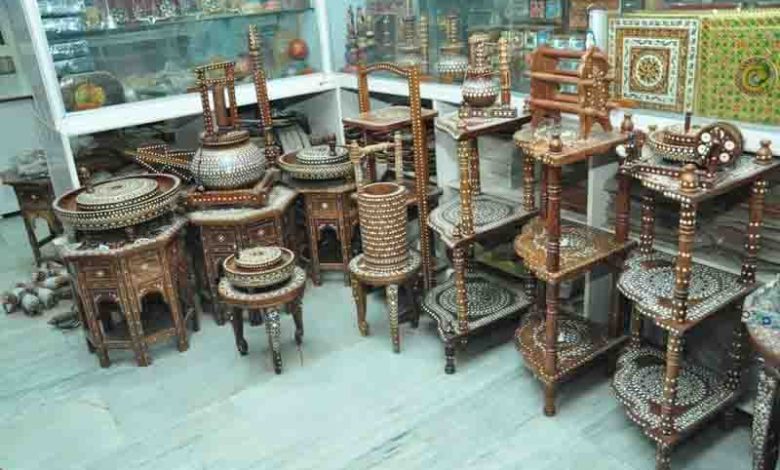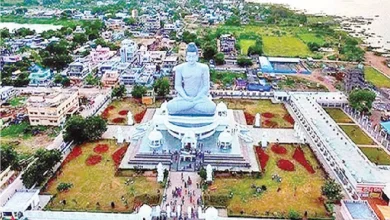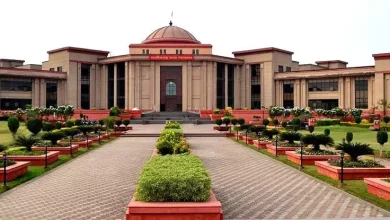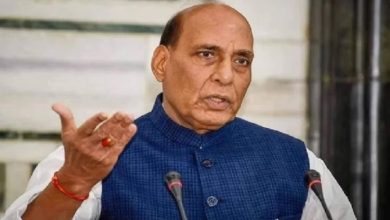Punjab: Decline in wood inlay artwork

Punjab: The unique wooden inlay handicrafts of Hoshiarpur started around 250 years ago. At that time, sheesham wood was the base, while the inlaid multifarious designs in wood carvings were of ivory. Gone are the days when unique exquisite wooden showpieces and furniture with intricate inlaid designs with ivory prepared by artisans of Hoshiarpur were the things of desire worldwide.
Since the use of ivory was banned in 1960s, the unique traditional artisanship was on the verge of extinction. To save this legacy, the artists started using gold, silver, aluminium, camel bone and acrylic plastic for the work. The artisans also came up with a solution by replacing ivory with acrylic inlay to revive the handicraft industry. There have been seven national award winners in this craft from Hoshiarpur and one Shilpguru, the highest award given to handicraftsmen by the Government of India, from this area.
In the decade of 1980s and 90s, Adamwal, Boothgarh, Bassi Gulam Hussein and Thathlan villages were the hubs of handicraft artisans. There were many families in these localities which had won national and state awards. More than 1,500 artisans had adopted this art as a profession, but the number has shrunk to less than 100. Even the artwork of artist Atta Singh is still displayed at the British Museum in England. The artwork of Shilp Guru awardee Rupan Matharu was gifted to US President Donald Trump by Prime Minister Narendra Modi in 2017. Later, a similar handicraft was gifted to Joe Biden.
Due to the rising input costs, shrinking margins and the negligible number of young men opting for inlay artisanship, the time was not far when it will go extinct. Adding to the woes is zero support for the newcomers in the profession. The government did nothing to help this micro-scale industry, but instead added to its woes by raising taxes. The government sponsors and supports the artisans who either have a state award or the national award, but nothing for the newcomers who wish to enter the profession by learning the inlay work. No wonder, the local industry is on the verge of closure. Other reasons include the non-adoption of family profession by the present generation and the non-availability of sheesham wood.
Punjab’s only Shilp Guru Rupan Matharu and his son, national awardee Kamaljeet Matharu, said the government had a programme named “Guru Shishya Parampara” under which the new generation was encouraged to learn inlay work for which stipend was also given by the govenment to the learners. “But what after they learn, they have no choice but to join a small unit as a handicrafts labourer and the remuneration they get is even less than the amount of stipend they had, so they are left with no other option but to leave it and join some other work or industry where they get better wages,” said Rupan.
Tilakraj Plaha, who had his three generations before him in the industry, recalled the days when the industry was flourishing. Various decorative items, photo frames and furniture were in huge demand. He still possesses appreciation certificates awarded to his forefathers by the British Empire in 1882 and 1886 for excellent artisanship during the commonwealth exhibitions in Australia and London.
He said: “But the time has changed now. It is getting difficult to save this art.” Talking of the problems, he said: “Sheesham is a major raw material in this industry. Its shortage is the main problem. Many times we have orders, but fail to deliver due to the non-availability of wood. The government should help us find an alternative with the help of the Forest Research Institute, Dehradun.” The organisations formed for the industry’s welfare such as the Hoshiarpur Handicraft Manufacturer and Exporters Association have been inactive for a long time.
Gunesh Jain, general secretary of the association, said the Hoshiarpur handicraft industry exported items to countries such as the USA, Canada, Australia and the UAE. He said the annual turnover of the industry was around Rs 10 crore a few years ago, which had now come down to Rs 2 crore. Jain, said: “We are not getting any support from the government. We are not able to compete with our rivals due to higher taxes. Earlier, handicrafts were exempt from sales tax, but later the government burdened us with 6 per cent GST and now the industry has been burdened with the GST of 12 per cent. The implementation of the VRIKSH certification for export is an added blow as the process to get the same is so complicated and costly that it’s too difficult for a micro-level industry to get the same.”





